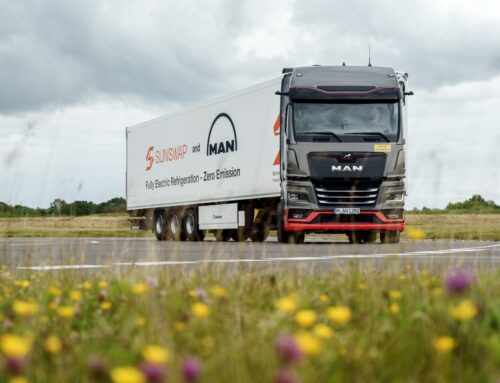Global driver shortfall ‘could double by 2028’
 The global shortage of truck drivers is set to double by 2028, according to a new report by the international union for road transport, IRU.
The global shortage of truck drivers is set to double by 2028, according to a new report by the international union for road transport, IRU.
The report found that over 3 million driver positions were unfilled – seven per cent of all positions – in a total of 36 countries studied, and forecasts that worldwide shortages could double in the next five years.
Demographics were a key concern, with the report finding that only 12 per cent of drivers were below 25 years of age – a figure which falls to just five per cent in Europe. Only six per cent of drivers in the countries studied were women.
“With the huge gap between young and old drivers growing, [the situation] will get much worse over the next five years without significant action,” warned the IRU.
“Without action to attract and retain drivers, over 7 million truck driver positions could be unfilled by 2028 in the surveyed countries, including 4.9 million in China (20 per cent of total positions), 745,000 in Europe (17 per cent of total positions), and 200,000 in Turkey (28 per cent of total positions).”
Driver shortages increased globally in 2023, according to the IRU’s survey, which covered more than 4,700 truck operators in Europe, Asia and the Americas, representing 72 per cent of global GDP.
Two exceptions to the trend were Europe and the United States, the union said, “where shortages eased slightly in 2023 due to softer transport demand as a result of inflation and tighter monetary policy limiting consumption and investment.”
IRU reports that in most countries studied, at least 50 per cent of road transport operators have serious problems hiring skilled drivers, with many also unable to expand, while losing existing clients and revenue.
Only China and Uzbekistan were bucking the trend on the driver age demographic, with a higher proportion of drivers under 25 – 17 per cent and 25 per cent, respectively.
On women drivers, China and the United States had the highest proportion among the studied countries, though this was still only eight per cent in the US, and six per cent in China.
IRU cites the ‘school-to-wheel’ gap as a key challenge facing the industry. The minimum driving age for international freight transport is as high as 26 in some nations, it observed, while high costs in terms of training, licensing and insurance were also deterring new recruits.
It said governments needed to facilitate access to the profession by lowering minimum driving ages and subsidising the cost of qualifications, as well as by allowing countries with a surplus of professional drivers to help cover gaps in third countries where needed.
IRU also highlighted an ageing overall population as a factor in the struggle to recruit young drivers. In Europe and the US, less than 13 per cent of workers are under 25.
“The structural issues behind truck driver shortages are continuing to impact transport services,” said IRU secretary general Umberto de Pretto.
“With the rate of newcomers being significantly lower than drivers retiring every year, urgent action is needed now.
“We are missing over 3 million truck drivers in the countries we’ve examined. Given the demographics of the profession, we forecast that it could double within five years.
“The consequences of such a shortage are already harming the communities, supply chains and economies that depend on our industry.
“We cannot allow driver shortages to get any worse. Operators are doing their part, but governments and authorities need to increase efforts to improve working conditions and access to the profession.”
The situation in the UK was brighter than average, however.
A spokesperson for IRU told Transport Operator that improved access to the profession was a key reason for what it said was currently a “very low” shortage of drivers in the UK, with just one per cent of total positions unfilled – despite the country having one of the most acute shortfalls at the end of 2021, when 10 per cent of positions were unfilled.
IRU said that the UK government’s HGV skills bootcamps, introduced at the end of 2021, had made a significant contribution, having proven “very successful in terms of helping people get their HGV licence”.
“[The scheme] allows people to obtain their licence and CPC for free (it even covers the costs of the medical test),” said the spokesperson.
“It has resulted in record numbers of people gaining their licence.”










